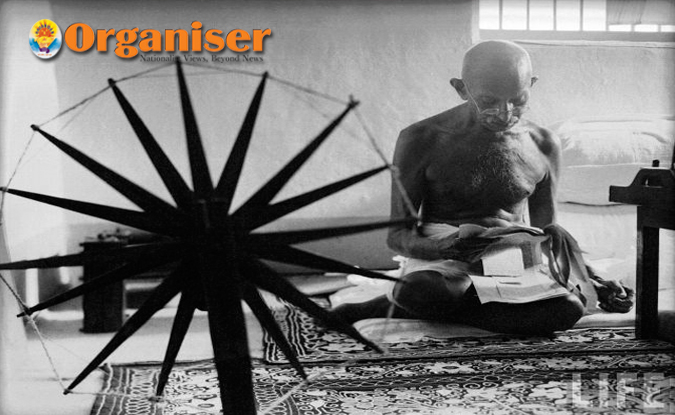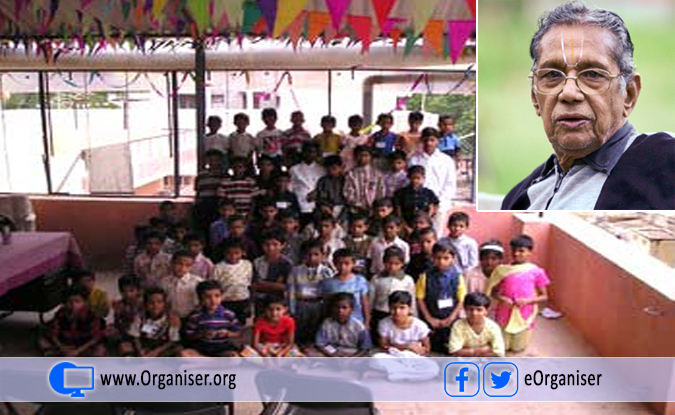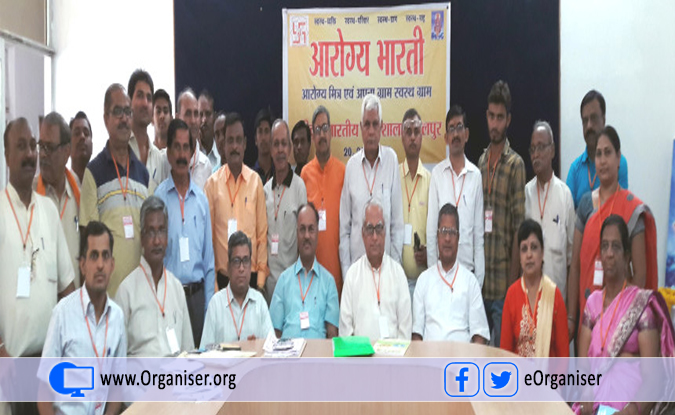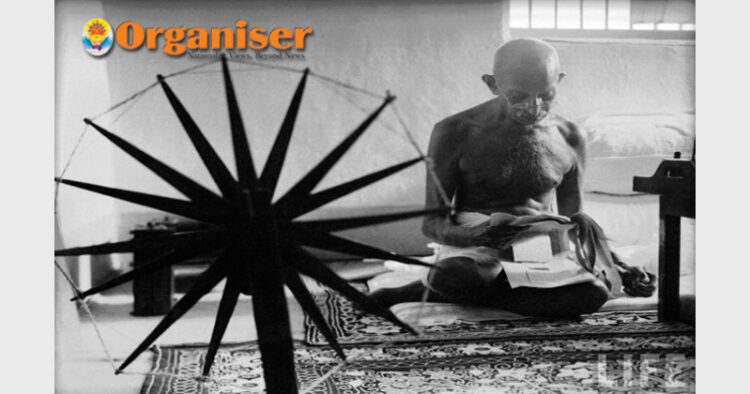Gandhian Constructive Programme is active and growing. While a Bengaluru based organisation works for protecting children of convicts, Arogya Mitras are providing healthcare in remote areas
Mahatma Gandhi had described constructive activities as “truthful and non-violent way of winning Poorna Swaraj”. What he envisioned in his book Constructive Programme in 1941 and 1943 has truly been materialised on the ground by scores of unsung heroes across the country showing the change that Gandhiji desired in the country after achieving Independence. On his 150th birth anniversary Organiser introduces some of the change makers whose small steps have shown big change.

Constructive Program (CP) is a term coined by Mahatma Gandhi to describe one of the two branches of his satyagraha (truth force)
Gandhiji dreamed of a ‘prosperous’ and ‘healthy’ Bharat, where every section of the society makes equal progress and every citizen enjoys a dignified life. He critically studied the maladies during his countrywide tours on return from South Africa and prescribed remedies in 1920 itself. In the Nagpur session he nudged the Congress to adopt a constructive agenda focusing on the activities like revival of hand-spinning and weaving, starting national schools for literacy, eradication of untouchability, promoting prohibition, etc. The Congress Working Committee at Bardoli in February 1922 advised party men to “devote themselves exclusively to some constructive activities”.
There are many such selfless social activists today who are serving the society and the nation to make it a better place in the Gandhian spirit. While the Bengaluru based SOCARE Ind is taking care of the children of convicts and helping them find a meaningful and respectful life, Arogya Mitras are taking health care to the people in the far off remote lands.
Arogya Mitra Scheme has emerged as a boon for the people in inaccessible areas. In the highly diverse region of North-East, this scheme has helped in saving lives of lakhs of people who had no option even to get first aid in the remote villages
Offering a Second Chance
The law convicts only the criminals, but the society ‘convicts’ their entire family in different forms. Their innocent children and family members are forced to live in self-deprivation, with loss of human dignity, utter poverty and sometimes in inhuman conditions. Obviously, such people, if left uncared for, are prone to different criminal activities.

V Mani put his life’s savings to start a home for the children of convicts. He put his life’s savings for a home for prisoner’s children
Bengaluru based SOCARE Ind took up this challenge in 1999 and so far has transformed the lives of many such children by providing them ‘parental care’. Today 165 such children, including 70 girls, are being taken care.
The man behind this miraculous change was Venkataragavachari Mani, whose initiative has made a big difference in the lives of both the convicts and their family members.
After retirement from Reserve Bank of India in 1999, he invested all his savings—about Rs 300,000—to convert his own house ‘Desik’ at Rajaji Nagar in Bengaluru into a hostel for the children of convicts. Though V. Mani passed away on November 1, 2012, his house is still filled with the children whose destinies were once horribly intertwined with the dark crimes—murders, dacoity and sexual offences—committed by their parents. Many have seen their fathers set their mothers on fire; many have been a mute witness to their mothers poisoning their fathers. Mani targeted the children of the convicts serving long-term prison in various jails of Karnataka. After procuring the children, he provided them comprehensive care in the form of free food, shelter, clothing, health and education at three separate hostels—two in Bengaluru and one in Gulbarga.
After retirement from Reserve Bank of India in 1999, V Mani invested all his savings—about Rs 300,000—to convert his own house ‘Desik’ at Rajaji Nagar in Bengaluru into a hostel for the children of convicts
Selfless Saviours
The goal of ‘health for all’ remains unattained even after seven decades of Independence. Thousands of people in remote areas die every year for want of timely medical care. The experiment of voluntary ‘Arogya Mitra’ has proved to be a boon for the people living in remote areas of the country, especially in North-Eastern States. These trained health professionals provide first aid and also educate people how to maintain a healthy lifestyle so that they do not fall sick.

Arogya Mitra Training and Apna Gram Swasthya Gram Workshop, Jabalpur
Arogya Mitra Scheme has emerged as a boon for the people in inaccessible areas. In the highly diverse region of North-East, this scheme has helped in saving lives of lakhs of people who had no option even to get first aid in the remote villages. In North-East alone, 5,500 Arogya Mitras treat about six lakh people in a year. The young boys and girls mostly belonging to the same village are imparted training in Homeopathy, and they are provided with medicine boxes containing 76 medicines after completion of their training. Then they provide primary medical aid to the people in their respective villages. Those critically sick are either sent to the big hospitals or are administered medicines in consultation with senior doctors. All Arogya Mitras work under the supervision of trained doctors. As such, the chances of mistake are remote. The service is ‘totally’ free. Neither the patients pay anything, nor the Arogya Mitra is paid any honorarium. They do it as service.














Comments